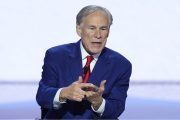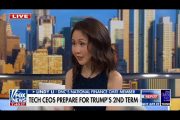
With Wall Street extending its pre-Labor Day selloff into Monday morning, stocks are close to giving back their historic gains made in August. To some the selloff also puts President Donald Trump’s reelection chances at risk.
According to LPL financial chief market strategist Ryan Detrick, the performance of the S&P 500 index in the three months leading up to the election has a nearly perfect record of predicting the election’s outcome. He says that the performance of that index has been the best predictor of presidential elections since 1984, proving 100-percent accurate — and is 87-percent accurate since the days of President Calvin Coolidge (1923-1929).
When that index is positive for those three months, the incumbent president always wins reelection. In August that index gained an historic seven percent.
Financial and investment firm BTIG’s chief equity strategist Julian Emanuel wrote to his clients last week: “At first glance, August strength plays well into Donald Trump’s reelection — in the three months prior to November elections, positive S&P 500 returns have accompanied incumbent party presidential victories 85.7% of the time.” But he added that the incumbent party has lost the White House when the S&P 500 is down from the end of August to the election.
Four days into September doesn’t create an irreversible trend, however. September is typically the weakest month for stocks, with losses averaging about one percent historically.
Also, the indicator has a 100-year track record of accuracy. Going back to 1928, incumbent presidents have won nearly 90 percent of elections with the S&P 500 index is positive for the three months prior to the election.
As the Wall Street Journal pointed out, “There have been six instances when in an election year the market fell from the end of August through Election Day, he said. It happened in 1932, 1960 and 2008, when Republicans held the White House. It also occurred in 1952, 2000 and 2016, when Democrats held the White House. All six times, the incumbent party lost the election.”
There are other factors in play. Strategas Research Partners’ Dan Clifton, a political strategist for the firm, said that “the best economic indicator I look at for a president’s re-election is after-tax, after-inflation incomes. Quite simply, the more incomes are growing, the larger the victory for the president’s re-election. Historically, if income growth from January through October of the election year is above 1.4 percent, then the president has won re-election.”
According to the Bureau of Labor Statistics, wage growth in the United States from June 2019 through June 2020 is 2.9 percent.
An Ivy League graduate and former investment advisor, Bob is a regular contributor to The New American, primarily on economics and politics. He can be reached at [email protected].
Related article:
Job Growth in August Exceeds Forecasters’ Expectations, Raising Trump’s Reelection Chances



